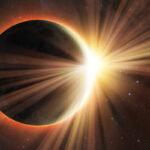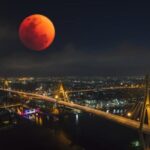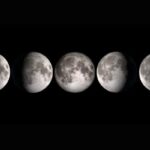We explain what a lunar eclipse is, how and when this phenomenon occurs. Also, the types that exist and what a solar eclipse is like.
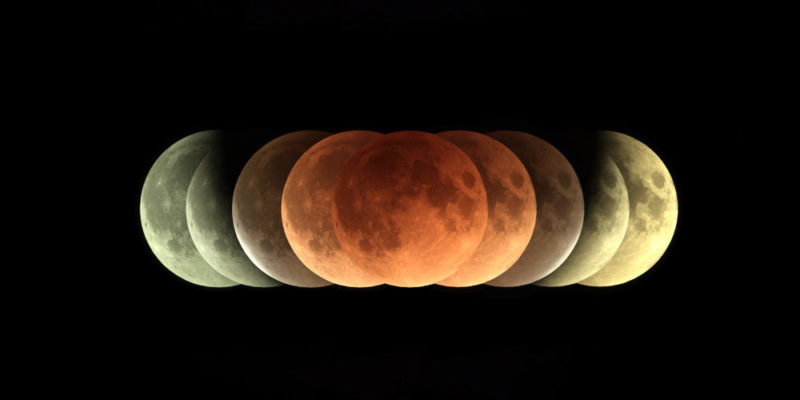
What is the lunar eclipse?
Eclipses, both lunar and solar, are astronomical events that occur from time to time. In the case of the lunar eclipse, The Earth comes between the moon and the sun and the three celestial bodies remain aligned for a time in that order. Thus, for a few minutes, it is the Earth that shadows the moon, and not the other way around. For this to happen, in addition to the alignment, the moon must be full.
Instead, A solar eclipse occurs when the moon comes between the sun and the Earth which means that, from our planet, the sun is obscured. In this case, the moon must be new and the three celestial bodies must also be aligned.
According to experts, Every year, one to four, five or even six lunar eclipses are recorded.
See also: Solar system
How does a lunar eclipse occur?
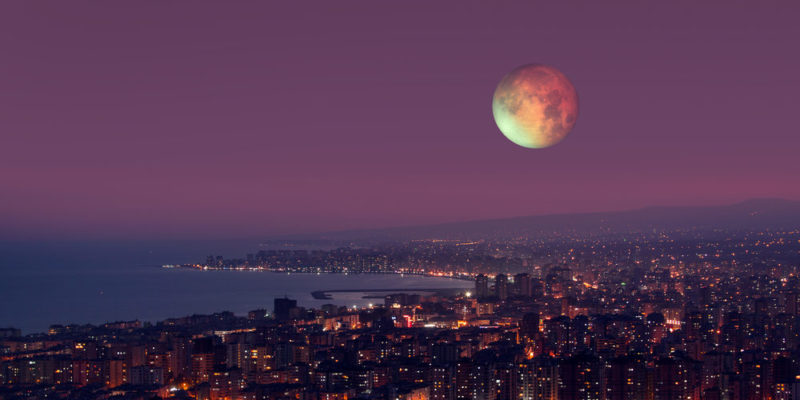
As previously explained, a phenomenon such as a lunar eclipse occurs when the full moon is covered by the shadow generated by planet Earth. There is one fact that is worth clarifying: it's g Thanks to the light of the sun that we can see the moon from our planet
That is why when there is a lunar eclipse, we see how The shadow of the Earth begins to advance, covering the lunar surface. Within that shadow we talk about two different parts: the penumbra and the umbra. While the latter is the area of the moon that is completely covered by shadow – and, therefore, is imperceptible -, in the case of penumbra the shadow is fainter.
How often does a lunar eclipse occur?
Although the moon rotates around the Earth every month, lunar eclipses do not occur 12 times a year. The explanation is simple: the path that the moon makes around the planet It is inclined about five degrees, if it is compared to the path that the Earth makes around the sun. This means that the moon is not always reached by the Earth's shadow.
The moon can be behind the Earth and still receive sunlight. That is why everything It will depend on where on Earth the person is at that moment: You must be in the half of the planet that is at night. Otherwise it won't register it.
That is why, although lunar eclipses are events that occur one to four, five or up to six times in a year, From the same place on the planet you can see several eclipses, as long as they occur at night. This is different from what happens with solar eclipses which, according to NASA, can be seen, from the same place, once every 375 years, on average.
Types of lunar eclipse
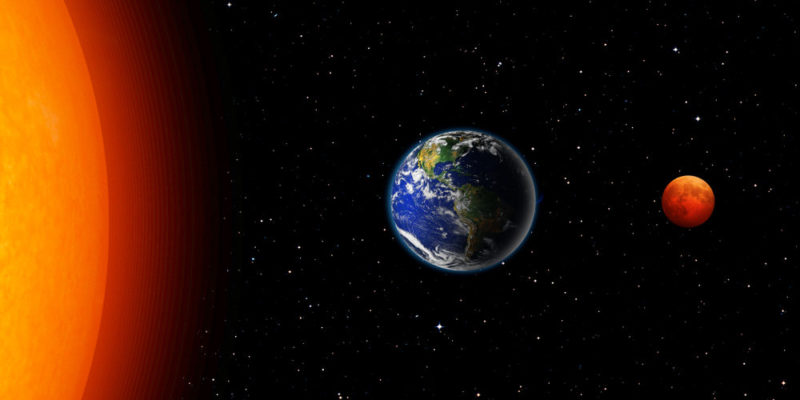
According to the proportion in which the Earth's shadow is projected on the surface of the moon, in addition to the part (umbra or penumbra) it reaches, different types of lunar eclipses can be identified:
- Total eclipse In this case, the Earth's shadow manages to cover the entire surface of the moon.
- Eclipse penumbral This event happens when the moon barely passes through the area of the penumbra – and not the umbra. That is why this event becomes more imperceptible. Within the penumbral eclipse there are two subtypes. The total, which is when the entire surface of the moon is reached by the penumbra, while, in the partial, only a part of the moon. In a year, it is estimated that one in three eclipses are of this type.
- Partial eclipse. This event is recorded when only a portion of the surface is reached by the umbra.
solar eclipse

Conversely, a solar eclipse occurs when the moon obscures the sun. When does this occur? When the moon is aligned between the Earth and the sun.
There is talk of a total solar eclipse when the lunar shadow manages to cover the entire surface. This phenomenon does not last more than a couple of minutes. While, the partial solar eclipse is when the lunar shadow fails to cover the entire surface. That is why, from Earth, a bright fragment of it can be seen.
He annular solar eclipse However, it is when the moon and the sun are aligned but, since it is smaller, a kind of ring of light is perceived. Finally, there are those who speak of a hybrid solar eclipse, which is when, from certain angles of the Earth's surface, it is seen as annular, while, from other angles, as total.
The Total solar eclipses are recorded every 500 days that is: approximately every year and a half. While partial ones are more frequent: two a year, on average.
Unlike lunar eclipses, Being able to see a solar one is quite a challenge. There are at least two conditions that must be met. On the one hand, the person who wants to see it must be at some point on the planet from which the moon's path is located. On the other hand, it has to be daytime in the place where that person is at the time the three celestial bodies align.
It is important that, when wanting to appreciate a phenomenon like this, You should not look directly at the sun, because can damage eyesight. Instead, you can use filters or different techniques to appreciate them. Or else, using different projection techniques suggested by specialists.
References
- “Data you need to know about the blood moon eclipse” in Ecoosfera.
- “Eclipses” in Astrosurf.
- “Eclipses” at Nasa Space Place.
- “Dissemination” at the Canary Islands Institute of Astrophysics.

